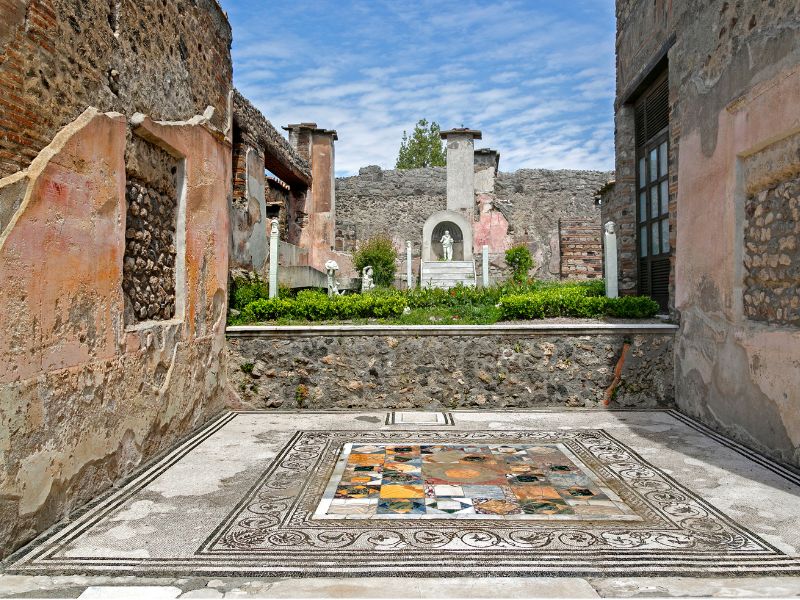Rebuilding of Ancient Pompeii: A Vision for a Reimagined City
Table of Contents
Introduction
Pompeii, the city frozen in time by the catastrophic eruption of Mount Vesuvius in 79 AD, has captivated generations with its poignant glimpse into the past. From history buffs to cultural travelers, the rebuilding of Ancient Pompeii offers an irreplaceable connection to ancient Rome.
But what if we could enhance this experience even further? Imagine a reconstructed Pompeii, where the vibrant life of the ancient city is not just visible but tangible. This vision has sparked fascination and debate over the centuries, leading to ongoing discussions about whether the rebuilding of Ancient Pompeii should take precedence over preservation.
Overview of rebuilding of Ancient Pompeii Concepts

The idea of reconstructing Pompeii isn’t a modern fantasy; it’s a concept that has been entertained for centuries. The thought of witnessing Pompeii as it once stood, with its vibrant colors and everyday life, offers both educational value and cultural enrichment.
Proponents argue that by rebuilding sections of Pompeii, visitors could gain deeper insights into Roman life, architecture, and society, transforming the site into a living museum of history. This approach could engage visitors in ways that static ruins simply cannot, providing a dynamic educational tool that bridges the gap between past and present.
Historical Context

Pompeii’s rediscovery in the 18th century ignited widespread interest in its preservation and potential reconstruction. The initial excavations revealed a city frozen in time—a unique opportunity to study Roman life.
Early on, key figures emerged, advocating for various approaches to the rebuilding of Ancient Pompeii to enhance understanding and appreciation. These proposals have shaped the dialogue around whether to preserve Pompeii as it is or to breathe new life into its ruins.
John Moore’s Early Vision
John Moore, an 18th-century physician and writer, envisioned bringing Pompeii back to life by reconstructing a house with its original decor and furnishings. His proposal aimed to offer a tangible connection to Roman life, effectively transforming historical curiosity into a lived experience.
Moore believed such rebuilding of Ancient Pompeii would serve as an educational tool, offering insights into the daily lives of Pompeii’s inhabitants that books alone could not provide.
King Ferdinand I and Arditi’s Plan
In the early 19th century, King Ferdinand I of the Two Sicilies, inspired by Michele Arditi, the director of the Royal Museum in Naples, entertained a similar vision.
Their plan to restore a Pompeian house to its former glory, complete with artifacts and decorations, proposed creating a living museum. Although this ambitious project never materialized, it underscored the potential impact of royal support on preservation and rebuilding of Ancient Pompeii.
François-René de Chateaubriand’s Ambitious Vision
The influential French writer François-René de Chateaubriand proposed an even grander scheme—a fully restored Pompeii, complete with roofs, walls, and streets rebuilt to their original state.
He argued that this approach would provide greater insights into Roman civilization than literary study alone. Chateaubriand envisioned a gradual restoration process, unfolding alongside ongoing excavations, to create an immersive museum where history came alive with every step.
Experiments in Reconstruction

While grand projects of rebuilding of Ancient Pompeii remained unfulfilled, several notable experiments demonstrated the potential of this approach to historical interpretation.
Temporary Reconstructions and Living Experiences
In 1837, an Englishman temporarily restored a Pompeian house and, along with his family, lived as the Romans did for two weeks. They donned ancient attire and adopted Roman customs, offering a unique glimpse into the possibilities of rebuilding of Ancient Pompeii as a means of enhancing historical understanding and engagement.
This living experiment showcased the power of experiential learning, where history becomes not just viewed but lived. Similarly, the renowned French author Alexandre Dumas spent over a week in the “House of the Faun” in Pompeii.
The city’s ambiance and history inspired his writing, illustrating how immersion in a reconstructed environment could fuel creativity and deepen appreciation for the past.
The House of Marcus Lucretius A Case Study
In 1847, the “House of Marcus Lucretius” was excavated and restored, exemplifying the potential of rebuilding of Ancient Pompeii to recreate an authentic ancient Roman environment. Led by English architect Edward Falkener, the project emphasized the importance of both gardens and interior rooms in creating an overall impression of a house’s original state.
This case study highlighted the significance of paying attention to exterior and interior elements when reconstructing historical settings.
Conclusion
The debate on the rebuilding of Ancient Pompeii highlights the complexities involved. While reconstruction can create immersive educational experiences, it raises concerns about authenticity and ethics. This discussion fuels conversations on archaeological site management and inspires new methodologies in the field.
